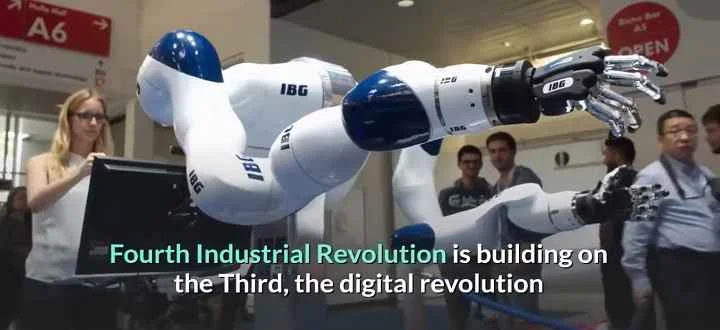1. Artificial Intelligence Technology (Artificial Intelligent / AI)
Artificial intelligence (Artificial Intelligent) is a computational technology for the development of machine intelligence that resembles thinking and working patterns like humans. Current developments include speech recognition, problem solving, planning and learning.
Example of artificial intelligence (Artificial Intelligent / AI): one of Google's products (this is only an example and does not intend to promote) called Nest Learning Thermostat (NLT). This AI uses behavioral algorithms to save energy based on your behavior and schedule.
NLT uses a very intelligent machine learning process, it learns your preferred temperature conditions for a week so that it will then automatically control the temperature according to your preferences. In addition, it can increase electricity savings because cooling equipment automatically turns off when no one is in the office.
2. Internet Of Things (IOT) Technology
The Internet of Things (IOT) is an integrated computing technology that is interconnected and communicates through machine and digital mechanisms and is able to transfer data over the internet network without human intervention.
In essence, all objects can be given an IP address so that they are connected to the internet network and have the ability to transfer data through the internet network.
An example of the application of IOT and which the author has used is Komtrax from Komatsu for monitoring heavy equipment. Komtrax always monitors the condition of each unit of heavy equipment wherever the heavy equipment is located.
And lately, on average, every new heavy equipment from every heavy equipment brand/manufacturer such as Caterpillar, Komatsu, Kobelco and others is equipped with IOT technology to monitor the maintenance and repair of these heavy equipment.
For example, if the heavy equipment has a malfunction or it is time for periodic maintenance, then immediately provide information both on the heavy equipment itself and on the monitoring computer wherever it is located.
Another example of implementing IOT is the use of IP CCTV connected directly to the internet network and having an IP address so that it can be accessed anywhere and can even be seen from a smartphone.
3. Robotic Technology
The use of robots in industry is intended to increase production yields, improve product quality, process stability, improve production management, create a humane work environment and save resources.
Robot technology in the industry is able to provide more benefits such as increasing the quantity and quality of products, stable production processes, reduced production variations, productivity approaching 100% and no loss time for changing workers between shifts.
Other advantages include reducing the problem of labor shortages and eliminating the problem of a lack of skilled workers.
Robot technology reduces the level of occupational health and safety risks because robots can replace work in hazardous areas.
When the industry decides to use robotic technology, it certainly requires a very large initial investment, but this cost will BEP quickly after the process is running.
However, it is necessary to watch out for and anticipate that robotic technology can have the impact of reducing human labor in industrial processes.
An example of the application of robot technology is a welding robot in the car industry, PT. Astra Daihatsu Motor, which the author witnessed when he attended the TPM training in 2002. This welding robot performs welding of more than 100 points on each car frame in minutes with a high degree of accuracy.
4. Virtual Reality Technology (Virtual Reality / VR)
Virtual Reality (Virtual Reality) is a computational technology for developing user interaction with a 3-dimensional environment resulting from computer simulations of objects and imagination so that it makes the user feel physically involved with that environment.
Users will feel the sensation of the real world in the virtual world. This sensation is felt not only by sight and hearing, but develops with other senses according to the simulation program.
An example of the application of virtual reality technology is Ford's new car design. The designers used Oculus Rift headsets to evaluate the inside and outside of the car's design.
5. 3D Printer / Printing Machine Technology
3 -dimensional printer (printer) is a machine technology that is able to print 3 -dimensional objects. The printout can be seen and held because it has a volume. 3 -dimensional objects are built layers by layer until all objects are successfully made.
3D printers can be used by the RND, prototype or designer section to produce components or products before mass produced. This will be easier than using a CNC machine production machine or injection molding because it interferes with the production process.
Until now 3D printers have experienced several improvements both in terms of equipment and printing materials. There is no volume limit on the printed object related to the volume of the printed object following the size or capacity of the printing machine.
The addition of laser technology, gold and silver printing materials and other metal materials, it is possible to print an object that was previously impossible.
An example of the application of 3D printer technology is the creation of a car prototype by Cor Ecologic which introduced Urbee in the form of a sleek and environmentally friendly as shown at the Tedxwinnipeg Conference in Canada in 2011.
Loading posts


